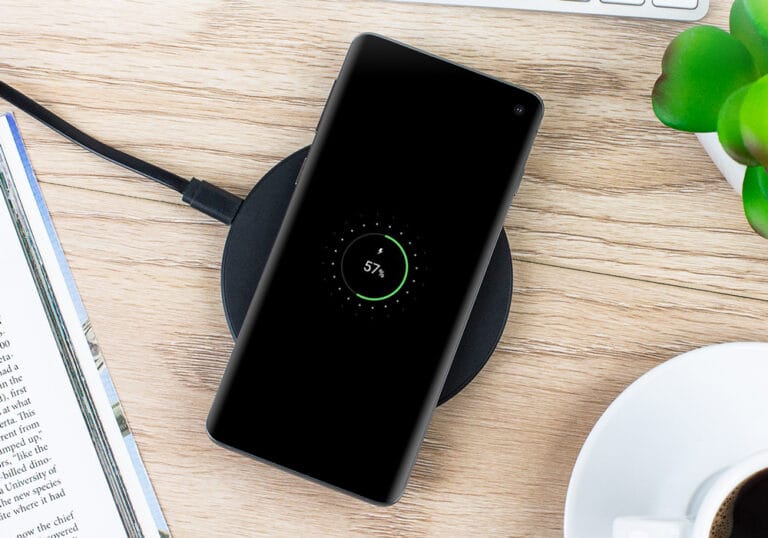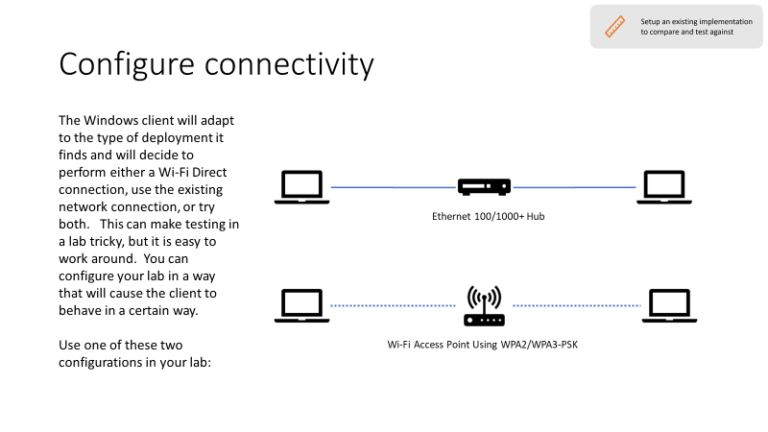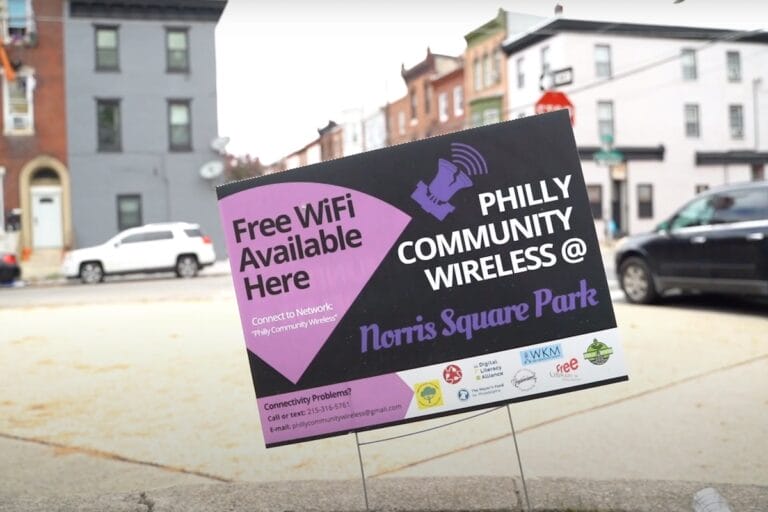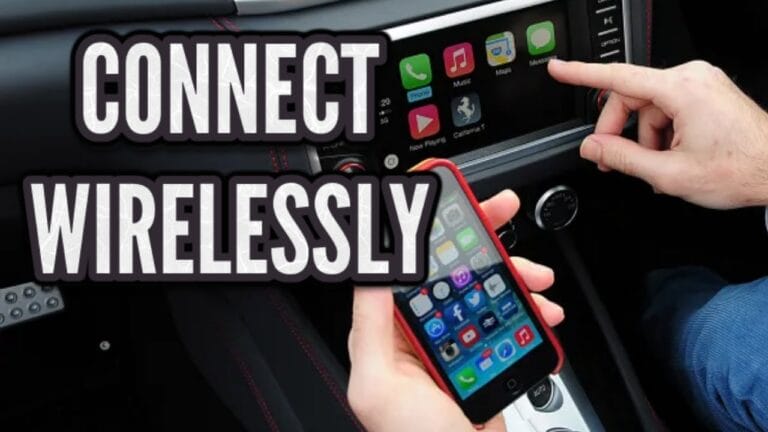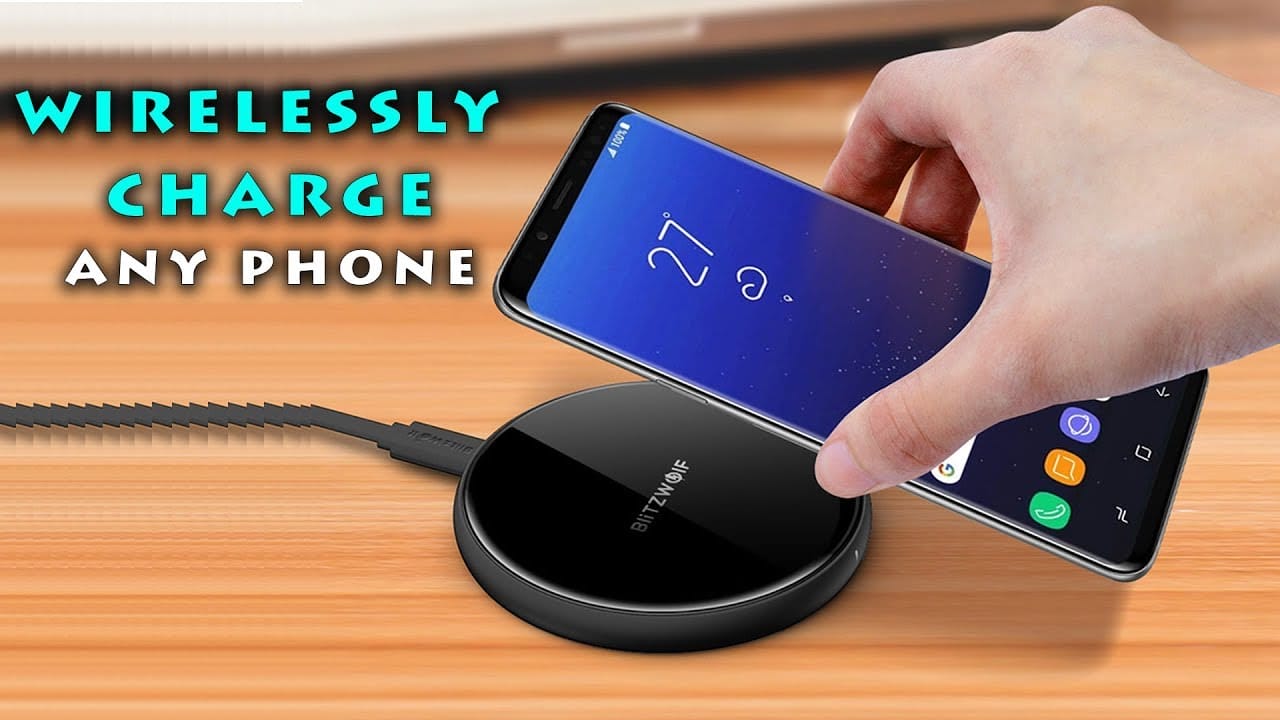
Looking to charge your phone wirelessly? Wondering how it works and if it’s as convenient as it sounds? You’re in the right place! Wireless charging has become increasingly popular, and in this article, we’ll dive into the world of cordless power.
So, get ready to uncover the secrets of wireless charging and learn how to keep your phone juiced up without any pesky cables.
Curious to know how wireless charging actually works? Well, it’s all about something called electromagnetic induction. Don’t worry, it’s not as complicated as it sounds! In a nutshell, wireless charging uses an electromagnetic field to transfer energy from the charging pad to your phone.
So say goodbye to the hassle of finding a charging cable every time your battery runs low, and say hello to the world of convenient charging at your fingertips. Let’s get started!
How to Charge Your Phone Wirelessly?
- Check if your phone is compatible with wireless charging.
- Purchase a wireless charging pad or stand.
- Connect the charging pad to a power source using the provided cable.
- Place your phone on the charging pad or stand, aligning it with the charging area.
- Wait for your phone to charge. You may see a notification or LED indicator to confirm.
- Once fully charged, disconnect your phone from the charging pad.
- Enjoy the convenience of wirelessly charging your phone!
What is Wireless Charging?
Wireless charging, also known as inductive charging, allows you to charge your phone by simply placing it on a charging pad or stand. The technology relies on the principle of electromagnetic induction.
In simple terms, the charging pad contains a coil that generates an electromagnetic field when connected to a power source. This field induces an electric current in another coil inside your phone, which then charges the device’s battery.
One of the key benefits of wireless charging is the convenience it offers. You no longer need to fiddle with charging cables or worry about port compatibility. Simply place your phone on the charging pad, and it will start to charge.
However, it’s important to note that not all phones come with built-in wireless charging capabilities. Some devices require additional accessories or cases to enable wireless charging.
Benefits of Wireless Charging
Wireless charging provides several advantages over traditional wired charging methods. Here are some of the key benefits:
1. Convenience: Wireless charging eliminates the need for cables and connectors, making it quick and easy to charge your phone. Just place it on the charging pad, and you’re good to go.
2. Reduced wear and tear: Wireless charging reduces wear and tear on your phone’s charging port, which can become damaged over time with repeated plugging and unplugging.
3. Safety: Wireless charging eliminates the risk of tripping over charging cables and potentially damaging your phone or injuring yourself. It also reduces the risk of frayed or damaged cables, which can be a fire hazard.
4. Compatibility: Many wireless charging pads are compatible with multiple devices, including smartphones, smartwatches, and wireless earbuds, making it a versatile charging solution.
5. Aesthetics: Wireless charging pads come in various designs and materials, allowing you to choose one that matches your style and decor. They can also serve as convenient stands, allowing you to view notifications or watch videos while your phone charges.
Types of Wireless Charging
Wireless charging technology has evolved over the years, leading to the development of different charging standards. Here are the two main types of wireless charging:
1. Qi Wireless Charging: Qi (pronounced “chee”) is the most widely adopted wireless charging standard. Qi chargers are compatible with a wide range of smartphones, including Apple iPhones and Android devices. They operate at a power output of up to 15 watts, providing fast and efficient charging.
2. PMA Wireless Charging: Power Matters Alliance (PMA) is another wireless charging standard, although it is not as widely supported as Qi. PMA chargers operate at a lower power output compared to Qi chargers, typically around 5 watts. PMA charging is mostly found in select Android devices and certain public charging spots.
It’s important to check if your phone supports Qi or PMA charging before purchasing a wireless charging device. Most modern smartphones are compatible with Qi charging, but it’s always best to double-check to ensure compatibility.
How to Wirelessly Charge Your Phone
Charging your phone wirelessly is a simple process. Here’s a step-by-step guide to get you started:
- Check your phone’s compatibility: Ensure that your phone supports wireless charging or invest in a wireless charging case or receiver if needed.
- Choose a wireless charging pad or stand: There are various options available, from sleek charging pads to stylish stands. Choose one that suits your needs and preferences.
- Connect the charging pad: Plug the charging pad into a power source using the included cable and adapter. Make sure the power source is reliable and stable.
- Place your phone on the charging pad: Align the phone’s charging coil with the charging pad’s coil. You might hear a slight beep or see a charging indication on the screen, confirming that the phone is charging.
- Wait for the phone to charge: Depending on the device and wireless charging technology, it may take a bit longer to charge wirelessly compared to traditional wired charging.
- Remove the phone when fully charged: Once your phone reaches a full charge, simply remove it from the charging pad. Avoid leaving your phone on the charger for extended periods, as it can generate excess heat and potentially shorten the battery’s lifespan.
Remember that wireless charging pads and stands can vary in quality and performance. It’s always a good idea to invest in a reputable brand and read reviews before making a purchase.
Wireless Charging Tips and Best Practices
To ensure the best wireless charging experience, here are some helpful tips and best practices:
1. Remove phone cases: Thick or metal phone cases can interfere with wireless charging. It’s recommended to remove them or use slim cases specifically designed for wireless charging.
2. Proper alignment: Align your phone’s charging coil with the charging pad or stand to ensure optimal charging efficiency. Some chargers have built-in alignment features, such as magnets or guide lights, to help with positioning.
3. Avoid foreign objects: Keep the charging pad clear of any foreign objects, such as coins, keys, or credit cards, as they can obstruct the charging process or damage the charging pad.
4. Maintain a stable power source: Ensure that the power source you connect the charging pad to is stable and reliable. Fluctuations in power can affect the charging speed and efficiency.
5. Charge overnight with caution: While wireless charging is generally safe, it’s advisable to avoid leaving your phone on the charger overnight to prevent unnecessary heat buildup and prolong the battery’s lifespan.
By following these tips and best practices, you can make the most of your wireless charging experience and ensure your phone stays powered up and ready to go.
Future of Wireless Charging
As technology continues to advance, wireless charging is expected to become even more prevalent and efficient. The industry is constantly working on improving charging speeds, increasing compatibility, and exploring new ways to integrate wireless charging into our everyday lives.
One exciting development is the concept of “over-the-air” wireless charging, which uses radio frequency waves to charge devices even while they are in use or on the move. This technology is still in its early stages but holds immense potential for transforming how we charge our devices in the future.
Another area of innovation is the integration of wireless charging into everyday objects, such as furniture, vehicles, and public spaces. Imagine having charging pads built into tables, car consoles, or coffee shop counters, allowing you to top up your battery wherever you go.
In conclusion, wireless charging provides a convenient and hassle-free way to charge your phone. By understanding the basics, exploring the benefits, and following the tips and best practices, you can make the most of this technology. Embrace the wireless revolution and say goodbye to tangled cables and charging woes!
Frequently Asked Questions
Wireless charging is an increasingly popular way to charge your phone without the hassle of cords. If you’re wondering how to charge your phone wirelessly, check out these commonly asked questions:
1. Can all phones be charged wirelessly?
Not all phones are capable of wireless charging. To charge your phone wirelessly, it needs to have built-in wireless charging technology or be compatible with a wireless charging case or receiver.
Popular phone brands like Apple and Samsung have models that support wireless charging, but it’s always a good idea to check your phone’s compatibility before investing in a wireless charger.
If your phone doesn’t support wireless charging, there are still options available. You can purchase wireless charging adapters or use phone cases with built-in charging capability to enable wireless charging on your device.
2. How does wireless charging work?
Wireless charging uses electromagnetic fields to transfer energy between a charging pad (or mat) and your phone. The charging pad contains a coil that generates an alternating magnetic field, and your phone needs to have a compatible coil to receive this energy.
When you place your phone on the charging pad, the magnetic field induces an electric current in the coil of your phone, which charges its battery. This eliminates the need for physical connections and allows for convenient charging without the hassle of cords.
3. Do I need a special charger for wireless charging?
Yes, you will need a wireless charger specifically designed for wireless charging. These chargers come in various forms, such as charging pads or stands, and use different wireless charging technologies like Qi or PMA. It’s important to make sure that your phone and charger are compatible with the same wireless charging standard.
Keep in mind that the charging speed of wireless chargers may vary, so look for chargers that support fast wireless charging if you’re looking for quicker charging times.
4. Can I still use my phone while it’s wirelessly charging?
Yes, you can use your phone while it’s wirelessly charging. The wireless charging pad is designed to allow you to use your phone, answer calls, or browse through apps without interrupting the charging process. However, keep in mind that certain activities such as playing graphic-intensive games may generate more heat, causing the charging speed to slow down slightly.
If you need to move your phone while it’s wirelessly charging, you can simply pick it up, use it, and then place it back on the charging pad. The charging will continue seamlessly without any interruptions.
5. Is wireless charging safe?
Wireless charging is generally considered safe for everyday use. Wireless chargers are designed with safety features that prevent overcharging, overheating, and excessive energy transfer. Additionally, wireless charging standards, such as Qi, undergo rigorous testing to ensure their safety and compatibility with devices.
However, it’s always recommended to use reputable wireless chargers from well-known brands and follow the manufacturer’s instructions for safe and proper usage. Avoid using counterfeit or uncertified wireless chargers, as they may not meet the necessary safety standards, potentially posing a risk to both your device and your safety.
Charging your phone wirelessly is a convenient and hassle-free way to power up your device. It involves using a wireless charging pad or stand that transfers energy to your phone through electromagnetic fields.
Simply place your phone on the charging pad, and it will start charging automatically. But not all phones are compatible, so make sure to check if your device supports wireless charging before purchasing any accessories.
Additionally, it’s important to position your phone properly on the charging pad to ensure a good connection. Remove any metal objects or thick cases that might interfere with the charging process.
Keep in mind that wireless charging may take slightly longer than using a traditional charger, but the convenience and freedom from tangled cords make it worth considering. So, if your phone supports it, give wireless charging a try and enjoy the simplicity it brings to your everyday charging routine.


